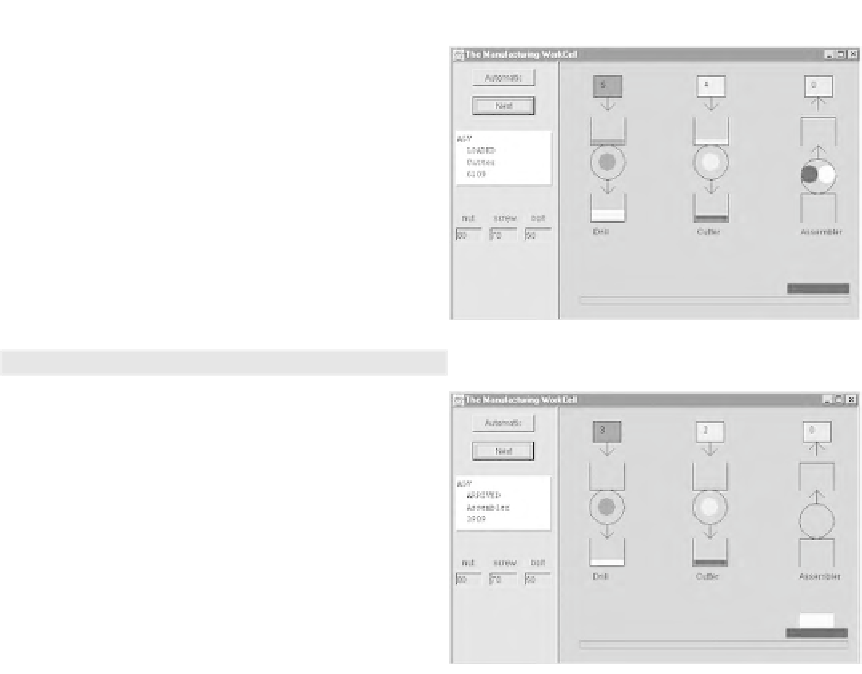Java Reference
In-Depth Information
Table 9.5
The sequence of events generated during the simulation and two GUI screen shots
Broadcaster
Event
Value
Time
NutSource
LOADED
Nut
809
ScrewSource
LOADED
Screw
1461
NutSource
LOADED
Nut
1694
Drill
WORKDONE
Drill
2309
ScrewSource
LOADED
Screw
2807
AGV
ARRIVED
Drill
2959
NutSource
LOADED
Nut
3181
AGV
UNLOADED
Drill
3259
Cutter
WORKDONE
Cutter
3261
Drill
WORKDONE
Drill
3809
AGV
ARRIVED
Assembler
3909
Broadcaster
Event
Value
Time
ScrewSource
LOADED
Screw
4101
NutSource
LOADED
Nut
4108
AGV
LOADED
Drill
4209
AGV
ARRIVED
Cutter
4859
ScrewSource
LOADED
Screw
4964
Cutter
WORKDONE
Cutter
5061
NutSource
LOADED
Nut
5124
AGV
UNLOADED
Cutter
5159
Drill
WORKDONE
Drill
5309
AGV
ARRIVED
Assembler
5809
AGV
LOADED
Cutter
6109
Copyright © 2005 Sun Microsystems, Inc. All rights reserved.
Reproduced by permission of Sun Microsystems, Inc.
9.6
■
Extension
A number of functional requirements have not been taken into consider-
ation in Prototype 2. The reader might want to develop a new prototype of
the work cell system that solves the design problems that have not been
addressed so far. Here is a list of possible extensions.
Class
Assembler
should implement the notification of the events
FULL
and
NOTFULL
to inform the AGV that the input buffer is full or is getting empty.
■
Class
Assembler
should manage two distinct input buffers for nuts and
screws; in fact if we model a single input buffer for both types of piece,
it might happen that the input buffer gets full of nuts (or screws). This
situation causes a deadlock, because the assembler extracts only pairs of
nuts and screws from the input buffer. Thus, if the buffer contains only
pieces of the same type, it will never start getting empty and there will
never be positions available for pieces of the other type.
■



